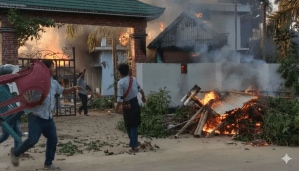Govt schemes dont reach 93% backward caste Muslims: Study
Report says 79% have no caste card,madrasas not preferred educational institutions,average family size is 4.6 members
Ninety-three per cent of backward caste Muslims do not get benefits of any government scheme despite qualifying for BPL status and 79 per cent of them dont possess caste cards,says a study of socio-economic and educational status of NT/DNT Muslims in Maharashtra.
The study was conducted by Razia Patel,head of the Minority Cell,Indian Institute of Education,a semi-government organisation in Pune. Minister of State for Home (urban and rural) and Rural Development Satej Patil released the report at the IIE Friday.
The biggest misconception among the common people and higher officials alike is that Muslims do not have a caste system. There are castes that fall in the category of nomadic tribes and de-notified tribes (NT/DNT) who have issues just like NT/DNT Hindus. These castes are not registered or acknowledged and have had no place in census and socio-economic researches so far, said Patel.
There are 24 identified,notified and de-notified tribes in Maharashtra and these are extremely poor,disadvantaged groups among Muslims. These people do not get official caste certificates and hence do not get any concession… The biggest hurdle is lack of data about this section of population and hence no effective representation about their needs in policy making forums,resulting in lack of strong policies for them, said Patel.
As many as 267 families were part of the sample survey conducted in four districts Pune,Jalgaon,Ahmednagar and Aurangabad. The survey has clearly identified the caste pattern among Muslims,with almost 18 castes very similar to those of NT/DNT in Hindus.
The study claims to break a lot of misconceptions about the community in general. There is a common perception that Muslims have large families and hence the poverty. But the lower caste Muslims have an average family size of 4.6. Then there is a feeling that Muslims prefer madrassas. But the most revealing observation is that three generations of them (85 per cent) have mostly studied in Marathi medium and zilla parishad schools and only 8 to 10 per cent in madrassas, says the report.
The government is spending money on modernisation of madrassas but the common Muslim man wants good education in government schools. They have realised the importance of formal education and want better future for their children. Hence,I think the government should spend money on making ashram schools and ZP schools more efficient than spending money on madrassas, said Patel. Illiteracy is a major concern. Only 2.5 per cent of the male and 1.2 per cent of females belonging to these castes have enrolled for higher education. Awareness about the schemes is so low that 93 per cent of them do not get any benefit that they should actually get, she added.







